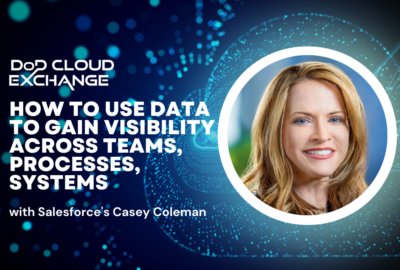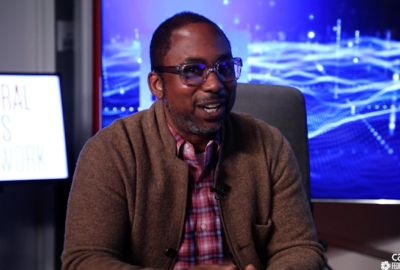Insight by Salesforce
Why agency leaders need to be more curious to improve CX
Salesforce’s Mia Jordan and Michael Hornsby highlight why bringing employees into the customer experience improvement discussion is so critical.
The Office of Management and Budget’s recent update to Circular A-11, the budget planning guidance for fiscal 2026, expands and updates agency requirements for customer experience.
Section 280 addresses everything from high-impact service providers to understanding how the Paperwork Reduction Act can impact your ability to measure customer experience.
Included in the CX section also was an interesting line from OMB: Employee experience should be an overarching component of CX. Now OMB didn’t offer much more information on what that means or how agencies should go about ensuring that.
But we do know that since 2018 when OMB first included CX in Circular A-11, agencies have quickly come around to grasp the equation of good customer experience plus a good employee experience equals a high-quality total experience.
Now with the emergence of better tools and improved data management, agencies are well-positioned to accelerate the impact and success of how they deliver services to all customers, including their own employees.
Mia Jordan, an industry advisor with Salesforce, said for the employee experience, agencies need to look at the entire technology and process stack for the hire to retire journey.
“The experience that they have to go through from the process of the application to onboarding to their first 90-to-120 days really sets the stage for how the employee feels about the organization that they’re working with,” Jordan said on the discussion Innovation in Government. “The retirement process also is rife with a lot of unknowns and it’s a little bit disjointed. So helping employees properly plan for retirement is necessary and it also has to be looked at in terms of how do we make this simple?”
Listen, learn and ask questions
Improving that initial experience sets the tone for how employees are to serve citizens.
Jordan said since employees are at the center of the customer experience, leaders must be able to listen, learn and ask questions about what the staff expects, how they can build services to meet those expectations and outline a shared vision for CX.
Michael Hornsby, the customer success director at Salesforce, said this type of approach to CX is most successful when the person at the front of this is a “curious leader.”
“Understanding that you don’t have to have all the answers, but if you don’t ask questions, you will not get any answers from anybody, and you won’t be able to really affect macro change in your agency,” Hornsby said. “There are people in the field that are that are doing stuff. Unfortunately, I think sometimes the work becomes so difficult and so taxing that people can’t step back sometimes and do that listening.”
And leaders who consistently are asking the right questions about how to improve the customer’s experience is part of building the relationships with their employees and the citizens they are serving.
“Leaders have to create this journey, and they have to understand the journey, and they have to put the customer at the center of that journey,” he said. “When you’re designing your services, when you’re designing the way that you share information, when you’re designing the apps that you bring into an agency, if the customer isn’t at the center of that conversation, understanding they want and their needs and the desires of that customer, agencies are going to get it wrong and they’re not going to provide the right experiences overall for their customers.”
Challenge the status quo
Jordan added a key factor in asking those right questions and putting the customer at the center of the journey is being comfortable in challenging the status quo. She said that doesn’t happen nearly enough in government.
“What you end up learning when you uncover or take the hood off of the business process that’s in place is that it’s folklore,” she said. “Well, Nancy did it this way for 20 years, and Nancy trained 10 people, and so now those 10 people all do it that way without challenging. Why do we do this if this makes the lives of our customers difficult?”
As with any culture change, leaders must do more than just call for change. They must recognize there is risk when trying new processes and technologies. Additionally, they must focus on what the outcomes are the change is trying to achieve.
Hornsby offered an example of an agency he used to work at where the leadership accepted the right amount of risk and asked the right questions.
“I was working really closely with the director of the visitor’s office, and her goal was to create a new experience for people coming to the White House. She wanted that experience to be special from the inception. So not just you get to do this tour, but from the time you get to the gates, everything has to be a new experience for you,” he said. “She was on a trip and she came back and said, ‘I want to create this boarding pass because I want people to have something special that they can have as a keepsake.’ The reason that this story goes back to the CX journey is because we could have said, ‘well, customers don’t know when they’re supposed to show up. They don’t have an email and so on and so forth. But what we did was we created an experience. They got this special thing. They got to share it with friends and family.”
Expanding the community of practice
Hornsby added at the same time they produced a new and better experience for the customer, the new process also solved technology problems like sharing information across the agency.
New guidance or policy from OMB would help accelerate this type of approach to improving CX, Jordan said.
She said that policy could focus on improving data sharing among agencies so citizens don’t have to fill out their data over and over again.
“We engage with systems like this in our private lives every day, and bringing those principles into the way that government is transforming and modernizing, I think should be standardized and almost such that it becomes mandatory that this is the way that good, good engagement looks and feels,” Jordan said. “
In September 2023, OMB issued new digital experience guidance, part of which included requiring agencies to identify and assess top public facing websites and digital services. OMB will lead an effort to assess common questions and top web content to make sure they eliminate duplication and that they are optimizing government content for search engine optimization.
Jordan said many times these CX challenges can be solved by sharing best practices and technology like software code.
“Michael and I are co-chairpeople of the Salesforce federal community of practice. We imagined it to be what we would have wanted when we were on the other side of the table, which is a place to learn what other government organizations are doing well opportunities to connect and solve the same problem in a safe space with one another,” Jordan said. “What we’ve seen bubble out of this community is this opportunity to share code so X agency may have developed a solution that is common across government, and there is an ability to now share that application or share that code with another agency. It may be 70% or 80% of the solution that they need. That’s good government. We’re talking about sharing code government-to-government with no cost to the government to do so. It is this community that we are trying to promote and to grow and to have it a place where people are actually seeing progress.”
Listen to the full discussion:
Copyright © 2025 Federal News Network. All rights reserved. This website is not intended for users located within the European Economic Area.




